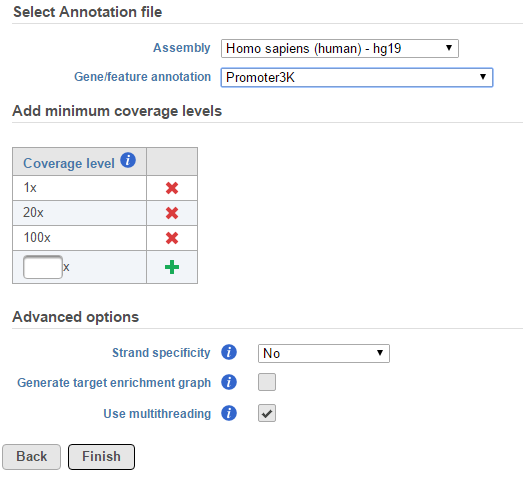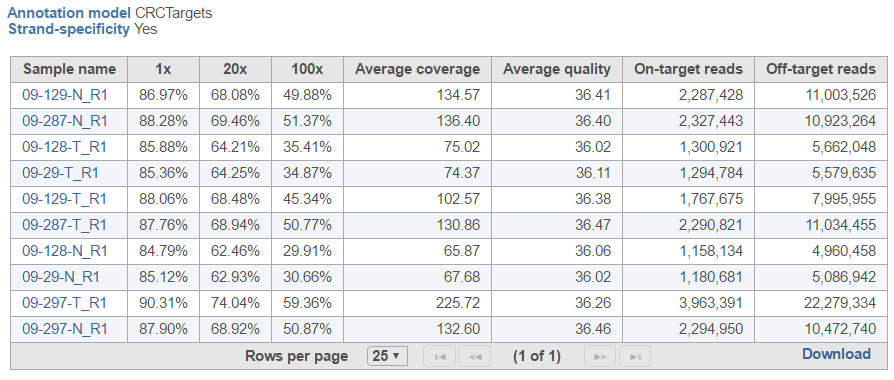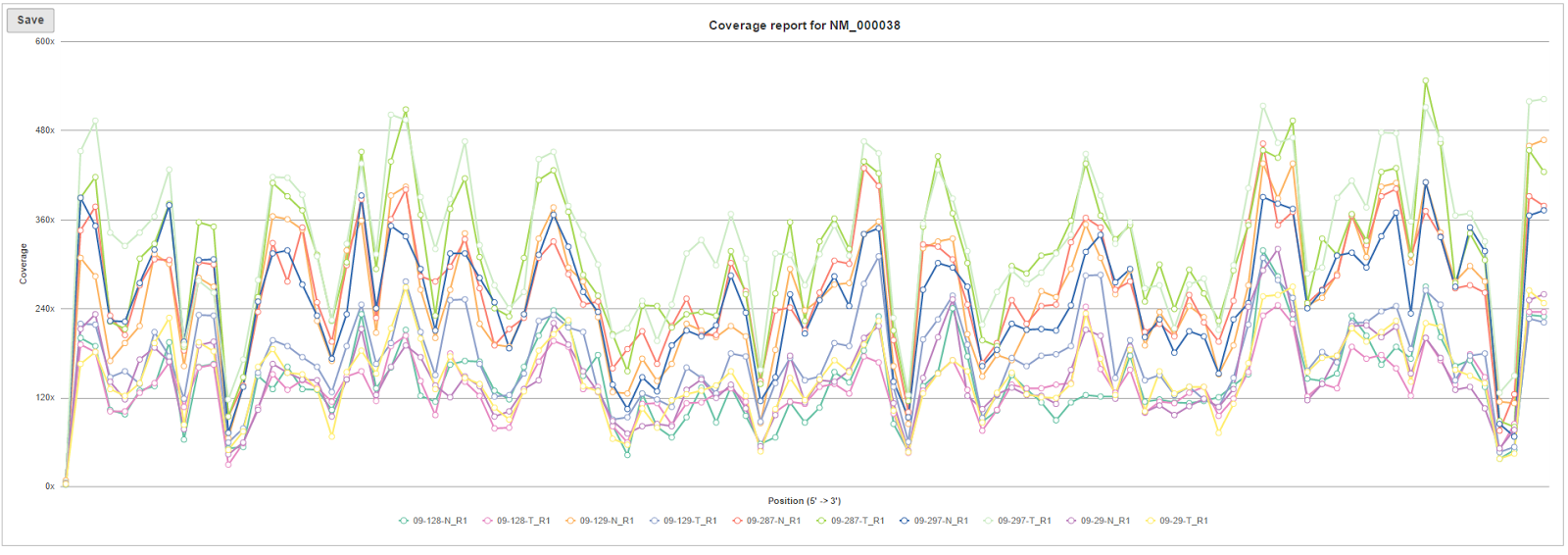Coverage report is also available for data nodes containing aligned reads (Aligned reads, Trimmed reads, or Filtered reads). The purpose of the report is to understand how well the genomic regions of interest are covered by sequencing reads for a particular analysis.
When setting up the task (Figure 1), you first need to specify the Genome build and then a Gene/feature annotation file, which defines the genomic regions you are interested in (e.g. exome or genes within a panel). The Gene/feature annotation can be previously associated with Partek® Flow® via Library File Management or added on the fly.
Complete coverage report will contain percentage of bases within the specified genes / features with coverage greater than or equal to the coverage levels defined under Add minimum coverage levels. To add a level, click on the green plus . Alternatively, to remove it, click on the red cross icon.
As for the Advanced options, if Strand-specificity is turned on, only reads which match the strand of a given region will be considered for that region’s coverage statistics.
Generate target enrichment graphs will generate a graphical overview of coverage across each feature.
When Use multithreading is checked, the computation will utilize multiple CPUs. However, if the input or output data is on some file systems like GPFS file system, which doesn't support well on multi-thread tasks, unchecking this option will prevent task failures.
Coverage report result page contains project-level overview and starts with a summary table, with one sample per row (Figure 2). The first few columns show the percentage of bases in the genomic features which are covered at the specified level (or higher) (default: 1×, 20×, 100×). Average coverage is defined as the sum of base calls of each base in the genomic features divided by the length of the genomic features. Similarly, Average quality is defined as the sum of average quality of those bases that cover the genomic features, divided by the length of covered genomic features. The last two columns show the number of On-tarted reads (overlapping the genomic features) and Off-target reads (not overlapping the features). The Optional columns link enables import of any meta-data present in the data table (Data tab).
Quantification of on- and off-target reads is also displayed in the column chart below the table (Figure 3), showing each sample as a separate column and fraction of on-/off-target reads on the y-axis.
Region coverage summary hyperlink opens a new page, with a table showing average coverage for each region (rows), across the samples (columns) (Figure 4).
The browser icon in the right-most column () of the Region average coverage summary table opens the Coverage graph for the respective region (Figure 5). The horizontal axis is the normalized position within the genomic feature, represented as 1st to 100th percentile of the length of the feature. The vertical axis is coverage. Each line on the plot is a single sample, and the samples are listed below the plot.
The Coverage summary (Figure 6) plot is an overview of coverage across of the targeted genomic features for all the samples in the project. Each line within the plot is a single sample, the horizontal axis is the normalized position within the genomic feature, represented as 1st to 100th percentile of the length of the feature, while the vertical axis show the average coverage (across all the features for a given sample).
If you need more details about a sample, click on the sample name in the Coverage report table (Figure 7). The columns are as follows:
Region name: the genomic feature identifier (as specified in the annotation file)
Chromosome: the chromosome of the genomic feature (or region)
Start: the start position of the genomic feature (1-based)
Stop: the stop position of the genomic feature (2-based, which means the stop position is exclusive)
Strand: the strand of the genomic feature
Total exon length: the length of the genomic feature
Reads: the total number of reads aligning to the genomic feature
% GC: the percentage of GC contents of those reads aligning to the genomic feature
% N: the percentage of ambiguous bases (N) of those reads aligning to the genomic feature
(n)x: the proportion of the genomic feature which is covered by at least n number of alignments. [Note: n is the coverage level that you specified when submitting Coverage report task, defaults are 1×, 20×, 100×]
Average coverage: the average sequencing depth across all bases in the genomic feature
Average quality: the average quality score across covered bases in the genomic feature
: the invokes the Coverage graph across the genomic feature, showing the current sample only (Figure 23) (or mouse over to get a preview of the plot)
: the invokes the Chromosome view and browses to the genomic location
Additional Assistance
If you need additional assistance, please visit our support page to submit a help ticket or find phone numbers for regional support.


| Your Rating: |
    
|
Results: |
    
|
43 | rates |







1 Comment
Melissa del Rosario
author: ilukic